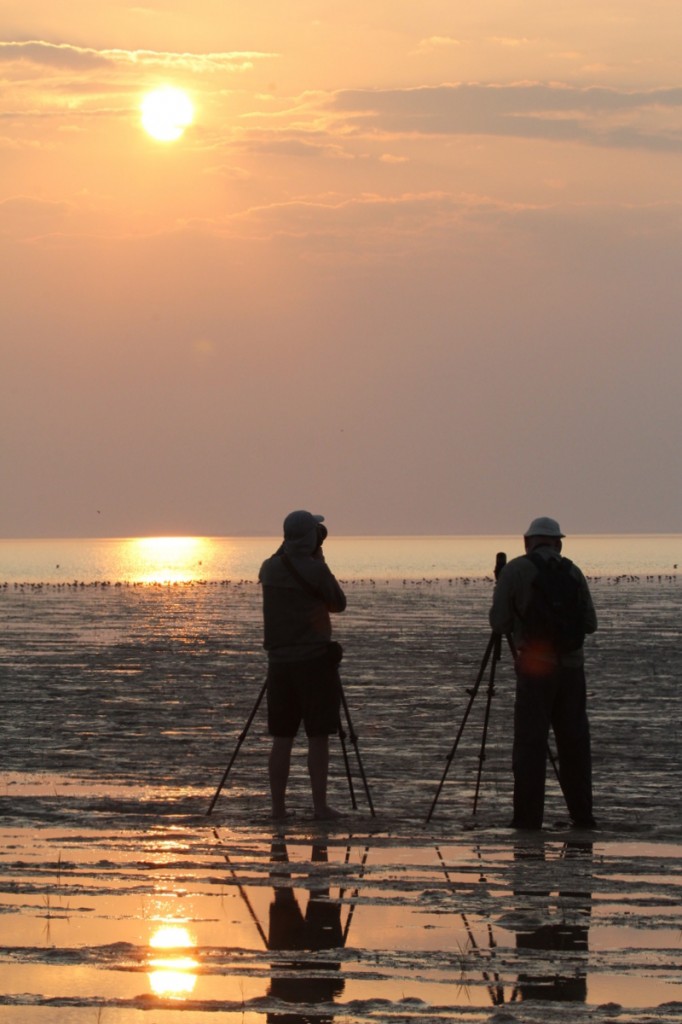Written by Nigel Clark
We are just back in Yangon having spent the last 8 days on an expedition to resurvey the waders that winter on the upper Bay of Martaban. The team consisted of Nigel Clark from the BTO, Guy Anderson, Graeme Buchanan and Rhys Green from the RSPB, Geoff Hilton from WWT and five ornithologists from BANCA (the organisation in Myanmar that has taken on the task of saving spoonies in the country). To get the 10 of us out into the middle of the estuary for a week required a fleet of 7 boats, each about 6 foot wide and 25 foot long and 14 experienced local boat handlers.
Living in these conditions for a week is a strange experience. The boats settle down on the flats on every falling tide in places where the boatmen know are away from the tidal bore that comes in on every tide. This means that they are also areas where a lot of soft mud settles. As a result mud gets everywhere if you are not careful to clean off the clingy mud every time you get into the boat. Remarkably the cooks managed to produce fantastic local food on tiny simple charcoal stoves in the bottom of the boat.

Gulf of Mottama at high tide © Guy Anderson
Our days were governed by the tides and as soon as the tide went out we would fan out from the boats to survey the mudflats looking for flocks of small waders when we found one we would count the number of each species and hope to find a spoonie before moving on to the next flock. We did this for up to 7 hours a day traveling a total of 6 to 15 km a day but making sure that we were back close to the boats before the bore arrived! Luckily that boatman could predict it well and gave us a time that we must be back so we were close to the boats long before the bore arrived. This also meant that we could observe bird movements on the rising tide and assess the total number of birds in the area.
So how did we do? The results were simply staggering! When we added up the totals of each species each day we counted a total of 145 thousand bird days. Taking into account the days when we might of counted birds seen on other days we believe that the minimum number of birds in upper Martaban is 90 thousand which is a substantial increase on previous counts.
We also had a total of 184 sightings of spoonies most of which were in scan samples where we counted all the waders in each flock. A rapid analysis by Rhys suggested that there may be about 155 in the upper bay now which is a similar number to previous surveys. This is very encouraging as we had predicted that the population was declining by 26% per year. If that was still happening then we would have only found 40 or less.
The big surprise was that we only found one colour marked bird which on first sight seems different to the proportion marked in the surveys we did in China in the autumn. This could be just chance or could suggest that there is some population segregation going on. We need to do a full analysis before we can decide which is the case, but it does show how difficult it is to understand the movement patterns of this charismatic species.
It is now time to catch up on sleep and prepare for the long flight home, but it is less than that flown by a spoonie each year!
The article is originally from Saving the Spoon-billed Sandpiper.





